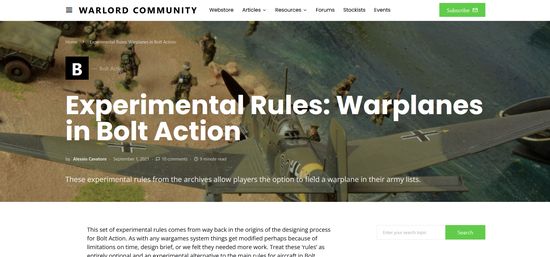This is one in a series of Workbench articles on basing. Here is a simple, quick and effective way of basing FoW troops.
There are a variety of ways to do this, and all are just as good. This is just the style I chose to illustrate today - this is in no way the end-all article to basing, and may not be the most appealing technique for you. I like it - that is what counts to me. If you have based thousands of figures and deem yourself a basing guru/expert, this article (most likely) isn't for you, and I recommend you skip it. If you are new to basing and want to learn a different way to do it, I will try and illustrate it the best I can, step by step. The figures I will be basing are by Battlefront. They are Italian HMG teams for the desert.
Basing is an important part of the final product when painting miniatures. Some consider it as important as the finished model. It can seem tedious, but spending a little extra time on the base will pay off at the end, and will make your figure that much more attractive. Basing this way takes some patience, and a series of steps.
For those painters who are beginning to do commission work, I recommend you charge appropriately for the work on the base. You will be surprised at how many appreciate it, and are willing to pay a bit extra to have it done. In some cases, basing can cost more than painting the figures - or at least, close to it.
There are many basing materials which gamers use. Here is a small list:
- joint compound
- grout(you can buy it in colors)
- wood putty
- sand mixed with glue
- plaster
- plain sand
- flock
- static grass
- or a mix of sand, static grass and flock
I personally like the look of my method. The colors I use on the base vary. On this occasion, I used progressively lighter shades of green-brown, with the final highlight being a bone color. Some use a redish-brown wash, which I sometimes use, also. I like the look of the red. I did not do it on this occasion.

I started out scoring the base, as directed in the FoW basing tutorial. I then carefully applied pumice gel (get it at a craft/art store); I think it is "coarse" size. This pumice gel requires some waiting for it to dry. If it is a warm day and you have it near the window with the window slightly ajar, it dries within the hour, I would say. Maybe sooner. Also, there is no flaking (which is something I like).

The gel can be painted first and then applied. On this occasion, I applied it first, and then spray-primed it black with the troops already on the base. This saves time. Maybe not the absolute best way to paint a figure, but for a wargaming-style figure, it works very well. I make sure to use a small brush, and leave some space between figures to get in the small areas.
I like to be neat around the edges. Also, the pumice can get dry and difficult to spread on the base. I wet my knife a bit, and I can control it better. Also, it is good that the figures are unpainted, because they are small and some spaces tiny. It is easy to clean up the figures if you get any base material on them. Not good if they are all painted already. I like to keep my edges clean. Some like the opposite. Either way, it is up to you.
I have the base sprayed, and then before I begin painting the figure, I paint the base. I like it this way because it keeps me focused on the miniatures once the basing is out of the way. I relax more this way. You can now see the base primed black, and later it is given the first coat of paint. I used a green-brown color from Folk Art. This is as inexpensive as any, and great for terrain. I will never use my terrain colors for figure painting, as this can get little alien material on to the figure itself and it will not have a smooth finish. I would recommend avoiding this all together.

I go on to paint the base progressively lighter shades. I tend to use three, and no more. Other painters use many more. I just don't think it is necessary. Once this is all done and dried, I begin to paint up the figures in a simple wargaming style. Nothing fancy - just effective on the tabletop at arms' length. Finally, I add small extra bits to the base. This always helps to liven things up.
I am directed by pictures and documentaries on how each topographic region will look - and all is subjective, of course, since it is my interpretation of what I see and choose to model. In this instance, I am modeling North Africa, so I will add some large rocks as cover (which the men collected and put in front of their HMG position), and I also added some tufts of light-green brush (as you will find in many North Africa regions).

All in all, this is the system I use and it works for me. Most of my eBay listings and commission work are based using this system. On separate occasions, I use wood putty - spread it, and later push sand into the surface; this also creates a nice look. I then glue and paint it.

I hope that this short tutorial was helpful in some way (or at least, minimally entertaining).









